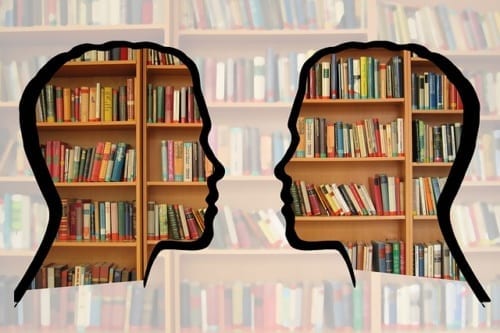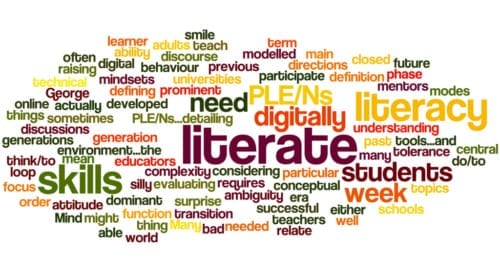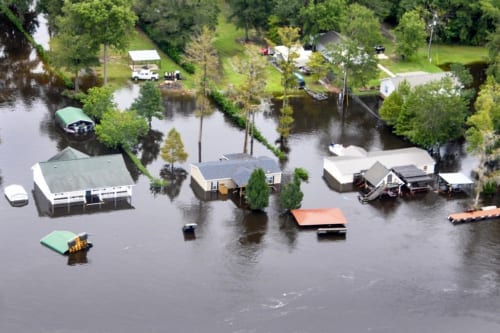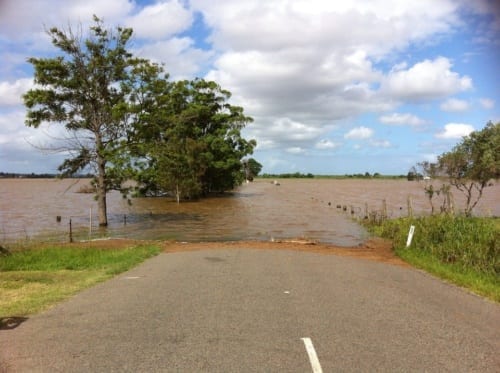Inquiries, Tasks, and Texts that Matter to Students in K-12
by Jacy Ippolito, Phillip Wilder and Cami Condie
 Over the past 20 years, educators in the United States have voiced concerns about adolescents’ lackluster reading, writing, and communication skills. The Carnegie Corporation’s 2009 Time to Act report outlines why early reading, writing, and communication success may not automatically translate into later excellence in high school, college, and the workplace.
Over the past 20 years, educators in the United States have voiced concerns about adolescents’ lackluster reading, writing, and communication skills. The Carnegie Corporation’s 2009 Time to Act report outlines why early reading, writing, and communication success may not automatically translate into later excellence in high school, college, and the workplace.
Some of the concern stems from what Tim and Cynthia Shanahan (2008) noted as a widespread lack of secondary school focus on “disciplinary literacy” instruction, or the explicit teaching of how to read, write, and communicate as historians, mathematicians, scientists and so on. The Shanahans were among the first to conceptualize disciplinary literacy. They argued that students need more than “basic” literacy skills (e.g., decoding, mastering sight words) and more than “intermediate” literacy skills (e.g., the common, generalizable reading strategies and routines associated with the “content-area literacy” movement).
 The Shanahans argued that adolescents in secondary classrooms need explicit scaffolding of the ways disciplinary insiders (i.e., professional artists, historians, mathematicians, musicians, engineers and so on) create and communicate content within their respective fields. Disciplinary literacy assumes there are real differences in the ways professionals across fields participate and communicate, and that without initial instruction in those explicit differences, students might flounder in college and the workplace. Importantly, disciplinary literacy work is about more than just “strategy instruction.” The focus is on apprenticing students into the practices used to construct knowledge in disciplines.
The Shanahans argued that adolescents in secondary classrooms need explicit scaffolding of the ways disciplinary insiders (i.e., professional artists, historians, mathematicians, musicians, engineers and so on) create and communicate content within their respective fields. Disciplinary literacy assumes there are real differences in the ways professionals across fields participate and communicate, and that without initial instruction in those explicit differences, students might flounder in college and the workplace. Importantly, disciplinary literacy work is about more than just “strategy instruction.” The focus is on apprenticing students into the practices used to construct knowledge in disciplines.
Bolstered by a focus on the teaching of discipline-specific vocabulary, reading, writing, and communication skills within the Common Core State Standards, the disciplinary literacy movement has grown. States such as Wisconsin have taken seriously the multi-disciplinary literacy charge of the Common Core to help students “learn to read, write, speak, listen, and use language effectively in a variety of content areas . . . specify[ing] the literacy skills and understandings required for college and career readiness in multiple disciplines” (CCSS, 2010, p. 3).
Yet, as a disciplinary literacy view of teaching and learning takes hold in schools and districts nationwide, several important questions emerge:
- What is the place for disciplinary literacy instruction in elementary school?
- What design principles can inform teachers’ disciplinary literacy instruction?
- What does disciplinary literacy instruction actually look like across grade levels and content areas?
- What kinds of professional learning and supportive structures are needed to help teachers design and enact effective disciplinary literacy instruction?
 In order for disciplinary literacy (DL) instruction to take-hold and improve student learning, school districts would be wise to think of DL along a K-12 continuum. Below, we offer a Responsive Disciplinary Literacy Teaching Framework for all teachers to use as they design DL instruction. But, we recognize the instruction designed will look different across disciplinary classrooms because “tasks, texts, and talk” vary by discipline. Finally, we offer two snapshots of DL instruction, one from the earliest grade levels and one from later grade levels to illustrate the power of this work across the K-12 continuum.
In order for disciplinary literacy (DL) instruction to take-hold and improve student learning, school districts would be wise to think of DL along a K-12 continuum. Below, we offer a Responsive Disciplinary Literacy Teaching Framework for all teachers to use as they design DL instruction. But, we recognize the instruction designed will look different across disciplinary classrooms because “tasks, texts, and talk” vary by discipline. Finally, we offer two snapshots of DL instruction, one from the earliest grade levels and one from later grade levels to illustrate the power of this work across the K-12 continuum.
A Framework for Responsive Disciplinary Literacy Teaching
While there have been several popular ways of conceptualizing disciplinary literacy in recent years, we are in great need of more teacher-friendly frameworks to help promote a shift toward disciplinary literacy work. More than instruction which foregrounds the discipline and backgrounds (or ignores) the literate lives of students, a responsive disciplinary literacy approach can honor the lived experiences of students and form a bridge between students’ experiences and communities of disciplinary practice (Moje, 2015). In this way, teachers can work together to integrate local disciplinary practices with the literate practices and identities of specific students (Wilder & Herro, 2016). Our colleague Phillip Wilder at Clemson University suggests one such framework comprised of three key teaching practices.
1) Creating purpose with inquiry and tasks
Engaged reading requires an authentic reason to think (inquiry) and a complex disciplinary problem (task). Authentic disciplinary inquiry finds the sweet spot between questions valued in the discipline and those which matter in our local communities. But, authentic inquiry won’t sustain student engagement unless a complex task mimics disciplinary practice.
2) Identifying and assessing appropriate disciplinary texts
While a text can be viewed as any representational resource (Cope & Kalantzis, 2000) used by students during disciplinary inquiry, teachers should select texts which align with the discipline, represent conflicting perspectives on the topic, and function as tools for literate thinking. When analyzing historical narratives about Benjamin Tillman, a U.S. historian would prioritize primary sources in the same way a biologist would prioritize observations of eroded creek beds and water samples when determining the health of a nearby waterway.
3) Modeling literate disciplinary thinking
Within disciplinary inquiry with appropriate texts, every student will experience multiple bottlenecks or predictable places where their thinking gets stuck. And, as resident disciplinary experts, teachers can scaffold student thinking. However, knowing which bottleneck to address with whom remains a challenge, as students may not all experience the same bottlenecks at the same time with each disciplinary text. By paying close attention to students’ interaction with texts, teachers can apprentice students into disciplinary ways of reasoning and using texts.
The Framework in Action
To illustrate this framework in action, consider two snapshots of classroom instruction, one from high school and one from first grade. Each snapshot highlights students actively engaged in disciplinary literacy inquiry work.
1) Using Texts as Tools in High School to Investigate the Impact of 2015 Flooding in South Carolina
 When the historic Thousand-year Storm subsided, over twenty inches of rainfall had burst local dams, washing away roads, bridges, and homes — including Stephen’s, which he shared with his younger brother and grandparents. Now, a year later, and sitting in Mr. Washington’s eleventh grade earth science class, mere blocks from where fields were washed out, subdivisions went weeks without power, and heroic rescues of stranded neighbors on rooftops occurred, Stephen’s experiential knowledge intersected with local scientific norms for inquiring, testing, and knowing more about the world around him.
When the historic Thousand-year Storm subsided, over twenty inches of rainfall had burst local dams, washing away roads, bridges, and homes — including Stephen’s, which he shared with his younger brother and grandparents. Now, a year later, and sitting in Mr. Washington’s eleventh grade earth science class, mere blocks from where fields were washed out, subdivisions went weeks without power, and heroic rescues of stranded neighbors on rooftops occurred, Stephen’s experiential knowledge intersected with local scientific norms for inquiring, testing, and knowing more about the world around him.
Within a four-week unit, Mr. Washington, Stephen, and his peers would investigate the impacts of the flood on local lives, while addressing one of the five primary Earth Science standards. Standard H.E.5. states students should “demonstrate an understanding of the dynamics of Earth’s atmosphere” (SC Department of Education). But, as any science teacher can attest, standards do not explain how to support students’ development of deep conceptual knowledge about the formation of local weather systems, the nature of the relationship between human activities and climate change, or how to “use the science and engineering practices, including the processes and skills of scientific inquiry, to develop understandings of science content” (SC Department of Education, p. 106).
Stephen and his peers can develop deep conceptual knowledge in Earth Science only by using the habits of reading, writing, and reasoning valued and used by the specific discipline as they investigate weather and climate (McConachie & Petrosky, 2010, p. 8). Teachers, then, can use three key teaching practices to support how students use texts as tools for disciplinary thinking, communicating, and participating (Pearson, Moje & Greenleaf, 2010; Siebert et al., 2016; Wilder, 2016).
 For Mr. Washington, using the three teaching practices means bringing intentionality to his planning and teaching. Instead of designing disciplinary literacy inquiry, tasks, texts, and scaffolding regardless of the students in the room, these practices become “best practice” when Mr. Washington uses his knowledge of his students to inform how, when, and why instructional practices are used.
For Mr. Washington, using the three teaching practices means bringing intentionality to his planning and teaching. Instead of designing disciplinary literacy inquiry, tasks, texts, and scaffolding regardless of the students in the room, these practices become “best practice” when Mr. Washington uses his knowledge of his students to inform how, when, and why instructional practices are used.
After listening to student memories of the flooding, Mr. Washington and his students discussed how the flooding continued to impact family farms, homes, health and economic security. Students’ concerns about mold, contaminated local water supplies, and even the distrust of meteorology suggested several possible inquiry questions for the class to pursue, with the students ultimately settling on “How should our community continue to support those impacted by the flooding?” Mr. Washington suggested the class investigate how the flooding continued to impact lives and whether or not the FEMA emergency funds were sufficient.
Stephen proposed the class present their “stories and research” to the city council. After building a purpose through inquiry and task, Mr. Washington used the second practice to select appropriate disciplinary texts. In the discipline, “texts” included those valued by scientists and those related to the topics investigated. Mr. Washington gathered charts and graphs on the storm’s meteorological data, as well as videos of thunderstorm formations. He guided students in collecting mold samples from the homes of area community members, water samples from nearby ponds, and executive orders and news stories related to FEMA’s response.
For each of the texts, Mr. Washington asked students to preview the texts and predict how the texts might be challenging and helpful. Finally, as student groups used the texts to investigate different topics and develop local scientific models related to water quality, severity of mold in community homes, and meteorological accuracy in central South Carolina, Mr. Washington used close observation of student bottlenecks (or areas where students get stuck in their thinking) to inform his modeling of scientific reasoning with texts and data. Designing disciplinary inquiry and tasks, selecting appropriate disciplinary texts, and scaffolding disciplinary thinking can become “best practice” when teachers marry instructional decisions with the needs, voices, and lives of students.
2) Providing First Grade Students with Authentic Scientific Reading, Writing, and Inquiry Opportunities in Massachusetts
 In a summer program targeting English Learners needing support with reading, writing, listening and speaking, we chose to embed literacy interventions in content knowledge. As we met our elementary students, we quickly discovered that they had little-to-no experience with the ocean across the street from their school.
In a summer program targeting English Learners needing support with reading, writing, listening and speaking, we chose to embed literacy interventions in content knowledge. As we met our elementary students, we quickly discovered that they had little-to-no experience with the ocean across the street from their school.
Although they saw it every day from their bus window, most students had not touched the water or played in the muddy banks. So, we took our young scientists to the ocean (crossed the street), set their minds at ease that their shoes would be clean again, and asked them to put on their “scientist hats” and observe. One group of 10 rising first graders began to make observations about the color of the sky, the birds flying overhead, the dead crab by their feet, the muddy areas and watery holes for small creatures, and the bubbles on top and emerging from the depths of the ankle-deep water.
Observations led to questions: What are the animals in the water? Why are some areas muddy? Why do we have bubbles in our cove? These simple, honest questions became our curriculum and the foundation of all of our literacy interventions. Students’ initial questions led to more questions, inquiry led to inquiry, and the investigations began. Teachers were encouraged to provide opportunities to talk science, read science, write science, and do science with Pearson and colleagues’ model in mind.
 For the rising first graders, their most pressing questions were about bubbles. These young scientists read books about bubbles, sang songs about bubbles growing and popping, learned the parts (e.g., skin, air) and shape of bubbles (e.g., sphere), experimented with bubbles, and asked more questions about bubbles. They created lava lamps (materials included empty water bottles, vegetable oil, water, food coloring, and antacid tablets) to make observations about how bubbles formed and moved in a liquid. Although their conclusions may seem simple (e.g., The color of the food coloring placed in the lava lamp becomes the color of the bubble’s skin), they were totally appropriate and valid conclusions based on observational evidence. Our rising first graders then wisely asked why some bubbles outside our school were yellow in color, resulting in an older group of elementary students investigating the effects of boat pollution on our cove.
For the rising first graders, their most pressing questions were about bubbles. These young scientists read books about bubbles, sang songs about bubbles growing and popping, learned the parts (e.g., skin, air) and shape of bubbles (e.g., sphere), experimented with bubbles, and asked more questions about bubbles. They created lava lamps (materials included empty water bottles, vegetable oil, water, food coloring, and antacid tablets) to make observations about how bubbles formed and moved in a liquid. Although their conclusions may seem simple (e.g., The color of the food coloring placed in the lava lamp becomes the color of the bubble’s skin), they were totally appropriate and valid conclusions based on observational evidence. Our rising first graders then wisely asked why some bubbles outside our school were yellow in color, resulting in an older group of elementary students investigating the effects of boat pollution on our cove.
As bubble questions exploded, the rising first graders questioned, “Are bubbles always round?” To investigate, students created whimsical and geometrically-shaped pipe cleaners, dipped in soapy water, and then recorded their observations. “It didn’t stay a square!” rang out on the blacktop and was quickly recorded in science journals, after students observed a bubble changing to a sphere once it left the square wand. Importantly, students recorded findings because scientists record findings, not because it was our writing block time or because we were trying to make a writing connection. Disciplinary literacy naturally integrates reading, writing, listening, and speaking.
Our rising first graders continued to test emerging hypotheses. Specifically, they needed to investigate if their bubble wand findings (i.e., all bubbles are round) were true in other settings. Our scientists took their clipboards and went back to the ocean to search for non-spherical bubbles. Testing conclusions, reading about bubbles, learning about surface tension (in Kindergarten language), and then testing surface tension with water droplets extending over our water bottle lids engaged these young scientists. They could confidently explain why every bubble at the beach, in a lava lamp, or in your water bottle was always round. And, throughout all of these experiences, they were questioning, revising ideas, discussing findings, determining other ways of finding answers, and eventually presenting their new understandings to an outside audience. Teachers modeled scientific habits of mind as they questioned and researched alongside our students.
One of the teachers reflected: “I learned that the more hands-on and authentic experiences you give students, the more questions and ideas they have with their own thinking. I found that this carried over into their writing and reading. They started to go deeper with their thinking in reading and writing.” That deeper thinking was, in fact, the beginnings of scientific disciplinary literacy.
Conclusion
 At the core of the responsive disciplinary literacy teaching framework is the notion that authentic inquiry requires and motivates complex reading and writing work. Inquiry questions must be important, relevant, and timely. In the examples above, high school and elementary teachers chose experiences and texts that began to answer students’ authentic, place-based questions. The inquiries, tasks, and texts addressed student misconceptions; prompted reflection and rich conversation; and promoted critical reading, writing, and communication skills (including a growing awareness of the inaccuracies and partial truths of any particular text, dataset, or observation). Simultaneously, in each classroom, teachers were authentically learning alongside students, building their own knowledge of disciplinary literacy and the world. Disciplinary literacy emerged from following students’ honest inquiry.
At the core of the responsive disciplinary literacy teaching framework is the notion that authentic inquiry requires and motivates complex reading and writing work. Inquiry questions must be important, relevant, and timely. In the examples above, high school and elementary teachers chose experiences and texts that began to answer students’ authentic, place-based questions. The inquiries, tasks, and texts addressed student misconceptions; prompted reflection and rich conversation; and promoted critical reading, writing, and communication skills (including a growing awareness of the inaccuracies and partial truths of any particular text, dataset, or observation). Simultaneously, in each classroom, teachers were authentically learning alongside students, building their own knowledge of disciplinary literacy and the world. Disciplinary literacy emerged from following students’ honest inquiry.
As disciplinary literacy becomes an increasingly popular frame for content-area instruction, it is important to note that this kind of teaching does not happen by accident. Disciplinary literacy does not translate simply into thematic units of related activities nor simple sets of generalizable “strategies.” Disciplinary literacy instruction deliberately engages students in authentic inquiries, tasks, and texts. It is a kind of teaching that, at its best, rekindles teachers’ and students’ curiosity about the world around them, and empowers them to collaboratively explore real questions about their own lives and environment.
If we begin this work early, and provide authentic literacy experiences over time, we will undoubtedly find ourselves with a new generation of citizens able to think, read, write, and communicate as scientists and other experts — inquiring, constructing, and conveying knowledge in their respective disciplines. Now is the time to invest in exactly this kind of substantive, worthwhile teaching and learning in schools.
Author
Jacy Ippolito is an associate professor and department chair in the School of Education at Salem State University. Jacy’s research, teaching, and consulting focus is on the intersection of adolescent and disciplinary literacy, literacy coaching, teacher leadership, and school reform. Jacy is especially interested in the roles that teacher leaders, principals, and literacy coaches play in helping institute and maintain instructional change at middle and high school levels. The results of Jacy’s research and consulting work can be found in a number of journals and books, including the Journal of Adolescent & Adult Literacy, Professional Development in Education, the Journal of School Leadership, The Learning Professional, the Journal of Staff Development, and The Elementary School Journal. His recent books include Investigating Disciplinary Literacy (2017), Cultivating Coaching Mindsets (2016), Adolescent Literacy in the Era of the Common Core (2013), and Adolescent Literacy (2012). Jacy completed his master’s and doctorate in language and literacy at the Harvard Graduate School of Education. Prior to his work in higher education, Jacy worked as a middle school reading specialist, literacy coach, and drama teacher in Cambridge, Massachusetts.
Phillip Wilder is an assistant professor of adolescent literacy in the College of Education at Clemson University. A former high school teacher, literacy coach, and secondary teacher collaborator in the Center for Education in Small Urban Communities and the University of Illinois at Urbana-Champaign, Phillip’s research seeks to understand how empowering professional learning can generate more responsive literacy pedagogy and support the disciplinary literacies of students. His research and consulting work can be found in a number of journals and books, including the Journal of Adolescent & Adult Literacy, Research in the Teaching of English, Voices from the Middle, Cultural Studies of Science Education, English Leadership Quarterly, and Reconceptualizing the Literacies in Adolescents’ Lives. Phillip completed his master’s and doctorate in language and literacy at the University of Illinois at Urbana-Champaign.
Cami Condie is an assistant professor of literacy education in the Childhood Education and Care Department at Salem State University. She has been involved in teaching migrant and bilingual students for 18 years. As a classroom teacher, literacy interventionist, and literacy coach, she was instrumental in building schoolwide practices that addressed the learning needs of their specific student population. Currently, in partnership with the local public schools, she has designed and directed a summer literacy program that interweaves science-inquiry and literacy interventions for English learners and other low-income students. She has written about the instructional practices, professional development, and student growth experienced in this program for journals for NSTA, ILA, and local TESOL and Reading associations. She has also presented this work and her work on preservice literacy teachers’ specialized knowledge of reading at international and national conferences. Cami completed her Bachelor’s and Master’s degree at Brigham Young University and her doctorate in Literacy Education at Boston University.
Further Reading
- Education Week – Reading Apprenticeship Developers Discuss How to Avoid Reform Fatigue
- The Huffington Post – Lessons from Innovators: Strategic Literacy Initiative
- Cranston Herald – Gov. Raimondo visits Glen Hills to see challenge projects
